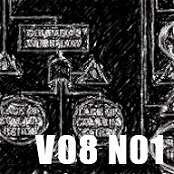Abstract
Solar protection systems play a significant role in the selective control of solar radiation in the interior space interfering, therefore, on the lighting, thermal and energy performance of buildings. This paper aims to conduct a comparative study of the performance of a solar protection system (fixed and automated mobile) of a building with a high level of thermal insulation using the Energy Management System (EMS) tool of the Energy Plus software. The methodological strategies proposed to involve the analysis of the configuration of eight different solar protection systems for the transparent closures, fixed brise-soleils, EMS implementation and, finally, analysis of the results of the simulations. The percentages of thermal comfort and electric energy consumption were evaluated considering the Brazilian bioclimatic zones 1 and 8. Among the cases tested, the model with external blinds automated by the EMS system at the windows presented the highest percentage of thermal comfort, and the lowest consumption of electric energy in the two analyzed Brazilian bioclimatic zones.
References
ABNT – ASSOCIAÇÃO BRASILEIRA DE NORMAS TÉCNICAS. NBR 15.220: Norma Brasileira de Desempenho Térmico de Edificações. Rio de Janeiro, 2005.
ABNT – ASSOCIAÇÃO BRASILEIRA DE NORMAS TÉCNICAS. NBR 15.575: Edifícios Habitacionais - Desempenho. Rio de Janeiro, 2013.
ABNT – ASSOCIAÇÃO BRASILEIRA DE NORMAS TÉCNICAS. NBR 15575-5 - Edifícios habitacionais - Desempenho. Rio de Janeiro, 2008.
BITTENCOURT, L. Uso das cartas solares: diretrizes para arquitetos. Maceió: Editora da Universidade Federal de Alagoas, 1988
CHVATAL, Karin Maria Soares. Evaluation of NBR 15575 simplified procedure for determining the thermal performance level of dwellings. Ambient. constr. [online]. 2014, vol.14, n.4, pp.119-134. ISSN 1678-8621. http://dx.doi.org/10.1590/S1678-86212014000400009.
DALBEM, R. et al.. Verification of the Passive House Concept to the South of Brazil Climate. Journal of Civil Engineering and Architecture. v. 10, p. 937-945, 2016.
DALBEM, R. et al. Discussão do desempenho da envoltória de uma passive house adaptada à zona bioclimática 2 em acordo com o RTQ-R. Ambient. constr. [online]. 2017, vol.17, n.1, p. 201-222. ISSN 1415-8876. http://dx.doi.org/10.1590/s1678-86212017000100132.
DATTA, G. Effect of fixed horizontal louver shading devices on thermal perfomance of building by TRNSYS simulation. Renewable Energy v. 23, p. 497-507, 2001.
EPE - EMPRESA DE PESQUISA ENERGÉTICA, Balanço Energético Nacional 2016. Disponível em: https://ben.epe.gov.br/downloads/Relatorio_Final_BEN_2016.pdf. Acesso em: 20 de maio de 2017.
FANGER, P. O. Thermal Comfort: Analysis and Applications in Environmental Engineering. New York: McGraw-Hill Book Company, 244, 1972.
FERREIRA, Camila Carvalho; SOUZA, Henor Artur de; ASSIS, Eleonora Sad de. Discussion of the limits of the thermal properties of building envelopes according to Brazilian thermal performance standards. Ambient. constr. [online]. 2017, vol.17, n.1, pp.183-200. ISSN 1415-8876. http://dx.doi.org/10.1590/s1678-86212017000100131.
GIVONI, B. Man, Climate and Architecture. London: Applied, 1998.
GRATIA, E; HERDE, A. de. The most efficient position of shading devices in a double-skin facade. Energy and Buildings v. 39 issue 3, p. 364-373, 2007.
HALDI, F.; ROBINSON, D. Adaptive actions on shading devices in response to local visual stimuli. Journal of Building Performance Simulation. v. 3 issue 2, p. 135-153, 2010.
KIM, G. et al.. Comparative advantage of an exterior shading device in thermal performance for residential buildings. Energy and Buildings v. 46, p. 105-111, mar. 2012. https://doi.org/10.1016/j.enbuild.2011.10.040
LABEEE - LABORATÓRIO DE CONFORTO E EFICIÊNCIA ENERGÉTICA. Arquivos climáticos em formato TRY, SWERA, CSV e BIN. Disponíveis em: http://www.labeee.ufsc.br/downloads/arquivos-climaticos/formato-try-swera-csv-bin. Acesso em: 10 dez. 2017.
MOESEKE, G. V.; BRUYERE, I; HERDE, A. de. Impact of control rules on the efficiency of shading devices and free cooling for office buildings. Building and Environment v. 42, n. 2, p. 784-793, fev. 2007. https://doi.org/10.1016/j.buildenv.2005.09.015
OLIVEIRA, L. Avaliação dos limites das propriedades térmicas dos fechamentos opacos da NBR 15220-3, para habitações de interesse social, da Zona Bioclimática 2. 2012. 168f. Dissertação (Mestrado em Arquitetura) – Programa de Pós-Graduação em Arquitetura e Urbanismo, Universidade Federal de Pelotas, Pelotas, 2012.
RORIZ, M. Arquivos Climáticos de Municípios Brasileiros. Associação Nacional de Tecnologia do Ambiente Construído. Grupo de Trabalho sobre Conforto e Eficiência Energética de Edificações. São Carlos, SP. 2012. Disponível em: http://roriz.dominiotemporario.com/doc/Sobre_os_arquivos_EPW.pdf Acesso em: set. 2017
SIGNOR, R. Análise de Regressão do Consumo de Energia Elétrica Frente a Variáveis Arquitetônicas Par Edifícios Comerciais Climatizados em 14 Capitais Brasileiras. Florianópolis, 1999. Dissertação (Mestrado em Engenharia Civil) - Programa de Pós-graduação em Engenharia Civil, Universidade Federal de Santa Catarina, Florianópolis, 1999.
SOARES, M. M. Avaliação dos parâmetros de desempenho térmico da NBR15575/2013: habitações de interesse social na zona bioclimática 2. 2014. 160. Dissertação (Mestrado em Arquitetura) – Programa de Pós-Graduação em Arquitetura e Urbanismo, Universidade Federal de Pelotas, Pelotas, 2014.
SOARES, Maicon Motta; SILVA, Antônio César Silveira Baptista da. Análise e compatibilização dos métodos simplificado e por simulação da NBR 15575: zona bioclimática 2. Ambient. constr. [online]. 2017, vol.17, n.1, pp.305-327. ISSN 1415-8876. http://dx.doi.org/10.1590/s1678-86212017000100137.
U.S. DEPARTMENT OF ENERGY, Application Guide for EMS, EnergyPlus Documentation. 2016.Disponível em: https://energyplus.net/sites/all/modules/custom/nrel_custom/pdfs/pdfs_v8.6.0/EMSApplicationGuide.pdf. Acesso em: 20 de maio de 2017.
OLGYAY, V.; OLGYAY, A.. Design with Climate: Bioclimatic Approach to Architectural Regionalism. New and expanded edition, Princeton University Press, 1963.
I accept that PARC Research in Architecture and Building Construction journal perform, on the original file approved for publication, revisions and modifications in orthoghaphic, grammar and standard issues.
I give to PARC Research in Architecture and Building Construction journal the rights of first publication of the revised version of my paper, licensed under the 'Creative Commons Attribution' license (which allows sharing the work with the recognition of first authorship and publication in this journal).

